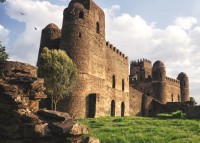Ethiopia touts ancient churches, dramatic landscape in tourism drive
BY AARON MAASHO When Scottish explorer James Bruce published a five-volume work in 1790 about his search in Ethiopia for the source of the Nile, European readers dismissed his account of ancient churches and castles: surely no such things existed in the heart of Africa.
When Scottish explorer James Bruce published a five-volume work in 1790 about his search in Ethiopia for the source of the Nile, European readers dismissed his account of ancient churches and castles: surely no such things existed in the heart of Africa.
Fast forward to 2014 and Solomon Tadesse sometimes feels he faces similar preconceptions as he seeks to attract tourists three decades after images of famine and communist purges filled TV screens and shaped the world’s view for a generation.
Yet Solomon’s Ethiopian Tourism Organisation is making headway in the battle to change attitudes. Visitor numbers have risen 12 percent a year in the past decade to reach 600,000 in 2014. His target next year is one million.
“That aspect has definitely diminished: the old clichés, the old paradigm, the old mentality of Ethiopia being a country of famine and war, but rather now with a potential for economic growth,” said Solomon, chief executive of the organization, a joint initiative between the state and private enterprise.
In the capital of Addis Ababa, the transformation from the starvation years and the “Red Terror” purges of the 1970s and 1980s is plain to see. Construction is booming and a metro opens next year, cutting through the sprawling city — the only such network in sub-Saharan Africa.
Ethiopia’s goal is to boost tourist revenues to $3 billion next year from $2 billion in 2013 and, if it achieves that, it will start challenging the dominance of regional rivals on Africa’s eastern seaboard, such as Kenya and Tanzania.
But instead of beach holidays and safaris, land-locked Ethiopia is promoting its imperial past – the below ground 13th century churches of Lalibela, hewn from solid rock, and the hill castles of Gondar – as well as its mountainous and majestic topography.
Read more at: Reuters



